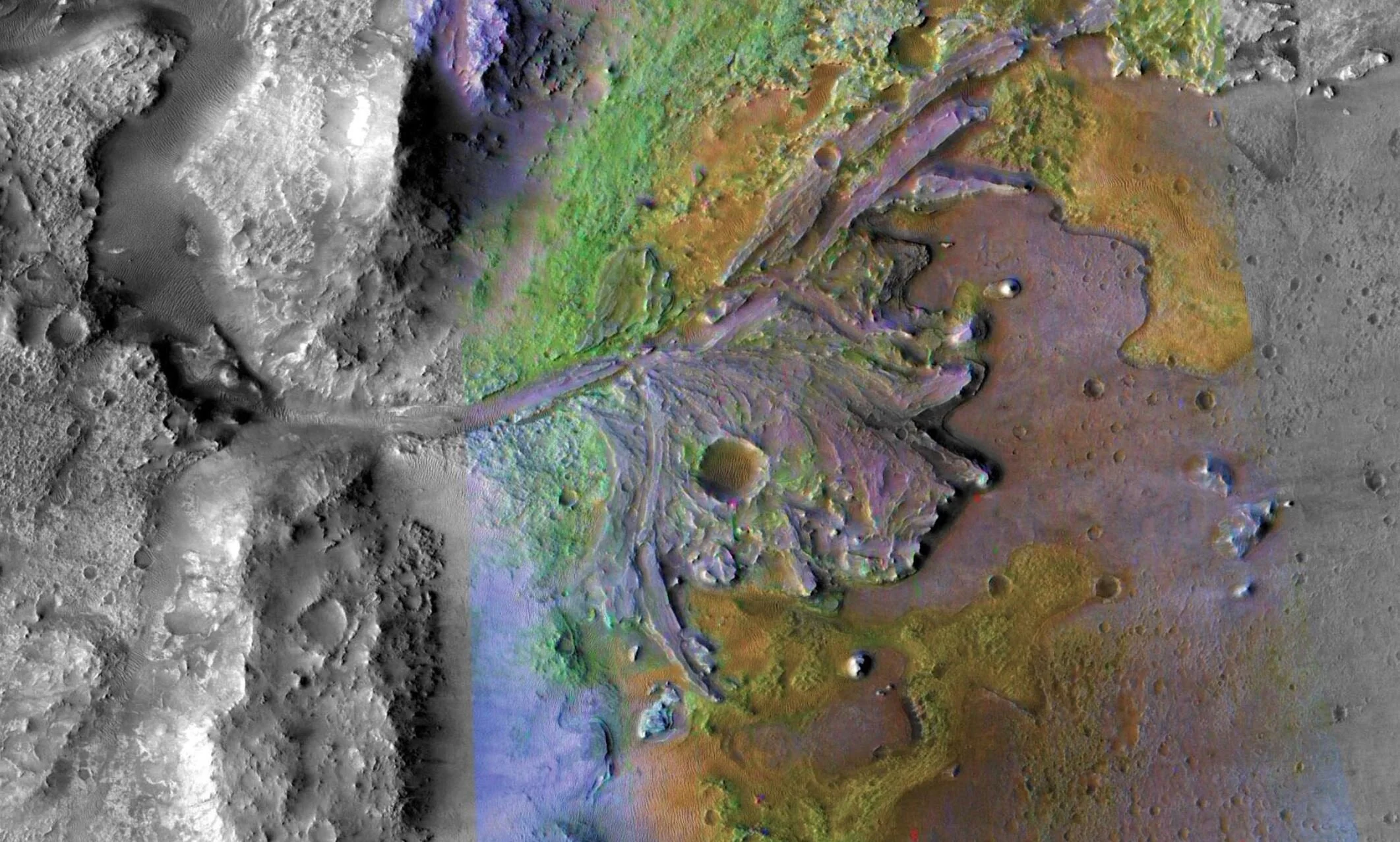Scientists discovered hydrated silica in the Jezero crater on Mars, a spot where NASA plans to land its next Mars rover in 2020. The Rover is intended to search for signs of past life on the neighboring terrestrial planet.
Areal view of the Jerezo Crater, if everything goes well a NASA rover will land here in 2021. - Image Credit: NASA/JPL-Caltech/ASU
Scientists discovered hydrated silica in the Jezero crater on Mars, a spot where NASA plans to land its next Mars rover in 2020. The Rover is intended to search for signs of past life on the neighboring terrestrial planet.
Hydrated silica is known for the role it plays in fossil formation; it is particularly good at conserving biosignatures. The researchers shared their work by in the science journal: Geophysical Research Letters. Jesse Tarnas, the main author of the research, explained that by use of a technique they developed to help find rare mineral phases that are difficult to trace, they found two rock formations of hydrated Sicilia inside the Jerezo Crater. It is known that this particular mineral phase is very good a preserving small fossils and other biosignatures from what we learned on Earth. This makes the are an exciting target for the future Mars Rover to explore.
The Jerezo landing location was only recently announced in late 2019. The area appeared to have been home to an ancient lake. A star attraction at Jezero is a vast delta deposit formed by ancient rivers that fed the lake. The delta would have accumulated a large amount of material from a huge watershed. It is well known that river deltas on Earth are excellent at preserving marks of life. In combination with the recently discovered hydrated silica, preservation potential is enhanced.
The Mars 2020 rover being worked on - Image Credit: NASA/JPL-Caltech via Wikimedia Commons
According to Jack Mustard, one of the co-authors of the research states that material that forms the bottom layer of a delta is occasionally the most effective in terms of preserving biosignatures. If you are able to find the lowest layer, and that layer has a lot of silica in it, you're in luck.
The scientists discovered the silica by use of the Mars Reconnaissance Orbiter (or MRO), a probe orbiting the red planet. Onboard of this orbiter, there's an instrument called the Compact Reconnaissance Imaging Spectrometer for Mars (or CRISM) that is capable of measuring both visible and infrared lightwaves. Researchers then used big data analysis techniques to find the weak spectral signature of silica deposits.
Of course, the satellites aren't able to check the deposits in high enough detail to check for biosignatures. NASA is planning to launch its Mars Rover in July of 2020, and it is expected to touch down on Mars in February of 2021. We will find out more once it gets to work. Yet another enthralling NASA mission that we can look forward to!
Sources and further reading: Orbital Identification of Hydrated Silica in Jezero Crater, Mars - Brown University press release
If you enjoy our selection of content please consider following Universal-Sci on social media:











